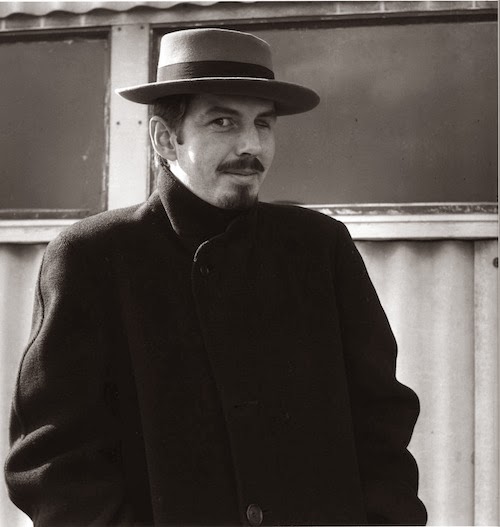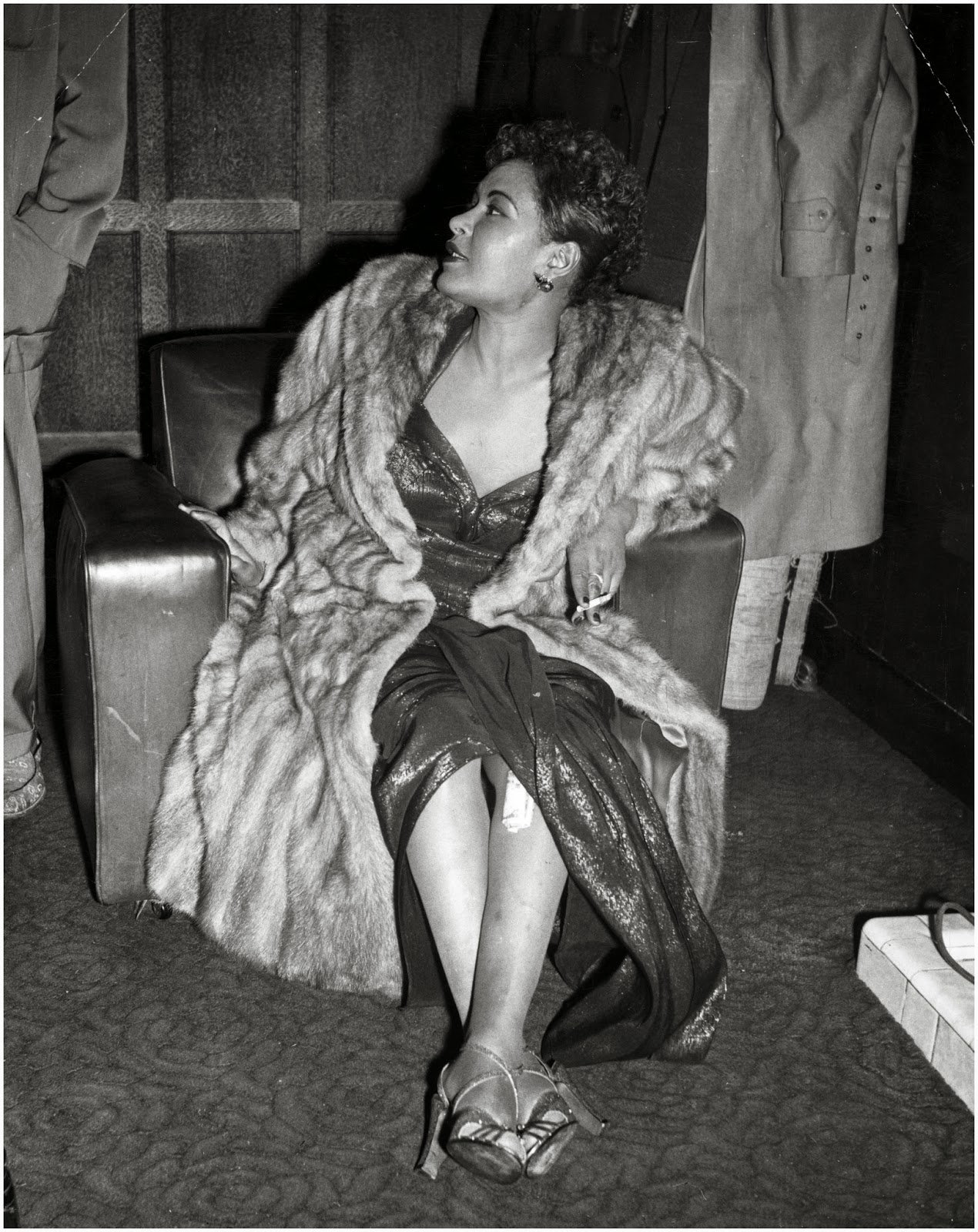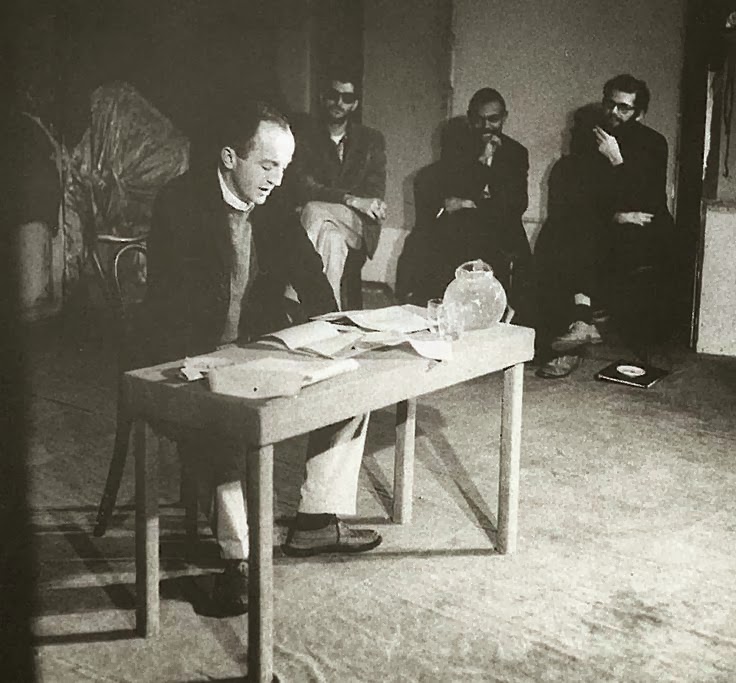By David "Chet" Williamson Sneade
There
has been an ocean of words written by and about poet Charles Olson.
Here are a few hundred more water spots, scribbles, and ink stains.
The specific focus of this piece is the influence jazz had on both
his writing and reading style.
Born
in Worcester in 1910, Olson is considered a giant (literally and
figuratively – he was six feet, eight inches tall) among American
poets. The man who is said to have coined the expression,
“post-modern,” Olson is recognized as a second generation
modernist who reaches back to seminal, first generation poets such as
Ezra Pound, William Carlos Williams, and T.S. Eliot. His
work extends forward to reach deep into the new American poetry of
the last half of the 20th century as well.
According
to Poets.org, Olson was the son of Karl Joseph Olson – who was a
postman in the city -- and Mary Hines. Charles Olson received his BA
and MA from Wesleyan University before teaching English at Clark
University. Two years later, he entered Harvard University in 1936,
where he completed coursework for a PhD in American civilization.
“By
the age of twenty-nine, he had received his first Guggenheim
fellowship for his studies of Herman Melville,” the site reported.
“Rather than pursuing an academic career, Olson became active in
depression-era politics. He served as the assistant chief of the
foreign language section of the Office of War Information (OWI).”
 |
| Student Olson |
Disillusioned
over an issue of censorship, Olson quit the organization in 1944 to
dedicate his life to writing. In 1945, he moved to Key West, Florida
and did just that. In 1950, he published his influential
essay, "Projective Verse." “Among other things,”
Poets.org points out, “the essay posited that poetry should embody
the rhythms of natural breath and thought.”
Olson's
ideas on poetics – especially those of “projective verse” --
had a profound influence on a generation of poets, including Denise
Levertov, Paul Blackburn, Ed Dorn, Jonathan Williams, Robert Duncan
and Leroi Jones, among others.
First
written in 1950, it was later published by Amira Baraka (Leroi Jones)
as a pamphlet for Totem Press in 1959, Projective Verse is
literally Olson’s revolutionary manifesto on how to do poetry in
the post-modern world.
In
a reading at the Fourth Annual Charles Olson Memorial Lecture at the
Cape Ann Museum in Gloucester in 2013, Baraka read a piece called,
“Charles Olson and Sun Ra – A Note on Being Out.” “If you
cannot make the connection that is between Olson and Sun Ra, you
cannot understand the topology of that time,” he said. “This
essay changed the direction of many young poets writing in the U.S.
in the ‘50s and ‘60s. Olson urges the poet to stop using the
closed forms of the formal U.S. verse … particularly, stop
using the dead inherited detritus of the English poetry – that a
new American poetry must be built on the ear, the breath, the sound
of the poet. It would be composition by feel, rather than overused
inherited, largely academic, usually iambic form.”
 |
| Baraka |
In 1950, the year that Olson writes Projective Verse, Herman “Sonny” Blount changes his name to Sun Ra, after the ancient Egyptian sun god. Speaking of Ra and his mystical, magic music, Baraka says, “The parallel that tie Olson and Ra -- they both exert great influence over American art during the ‘50s until this day.”
 |
| Sun Ra, looking radiant |
 |
| Herman "Sonny" Blount, AKA Sun RA |
Very
much inspired by jazz and the bebop that he listened in the 1940s,
Olson was once asked to describe the poetic theory. “Boy, there was
no poetic,” he cracked. “It was Charlie Parker. Literally, it was
Charlie Parker.”
Still,
in Projective Verse, he spells it out: “First, some
simplicities that a man learns, if he works in OPEN, or what can also
be called COMPOSITION BY FIELD, as opposed to inherited line, stanza,
over-all form, what is the “old” base of the non-projective.”
Riffing
more deeply, Olson explains, “Then the poem itself must, at all
points, be a high-energy construct and, at all points, an
energy-discharge.” He then states, the essential principle of
projective verse. “It
is this: FORM IS NEVER MORE THAN AN EXTENSION OF CONTENT.”
In
1951, Olson was hired to teach at the progressively minded, Black
Mountain College, North Carolina. Poet Robert Creeley, who would
become a life-long friend of Olson’s, was a student at the school.
 |
| Robert Creeley |
Olson
credits Robert Creeley with giving him the line of: “Form is never
more than an extension of content.” In an interview with the Poetry
Foundation, Creeley explained Olson’s projective voice stating:
“What he is trying to say is that the heart is a basic instance not
only of rhythm, but it is the base of the measure of rhythms for all
men in the way heartbeat is like the metronome in their whole system.
“So
that when [Olson] says the heart by way of the breath to the line, he
is trying to say that it is in the line that the basic rhythmic
scoring takes place. . . . Now, the head, the intelligence by way of
the ear to the syllable – which he calls also 'the king and pin'—
is the unit upon which all builds. The heart, then, stands, as the
primary feeling term. The head, in contrast, is discriminating. It is
discriminating by way of what it hears."
Creeley,
who was born in Arlington and raised in Acton, MA, dropped out of Harvard and began hanging out in Boston jazz clubs like the Hi-Hat to
listen to musicians, who would become the major influence on his
poetry. He would later release two albums on the ECM label with jazz
bassist Steve Swallow, Home and So There.
In
his book, The Culture of Spontaneity: Improvisation and Arts in
Post War America, author Daniel Belgrad states: “In 1950,
Robert Creeley wrote Charles Olson a letter pointing out the
correlations between Olson’s projective first essay in modern jazz.
Creeley wrote that Charlie Parker, Max Roach, Miles Davis, and Bud
Powell were undertaking extensions of form analogous to those that
Olson was proposing in verse.
“In
particular, he singled out bebop’s sensitivity to rhythm and tone:
‘Some notes on the thing about the project verse … Two things we
have yet to pick up on, with the head: a feel for timing, a feel for
SOUND.’ Creeley praised bebop as embodying a counter-cultural
sensibility, calling it an example, of ‘what timing variation, and
sound-sense can complete … a precise example of a consciousness
necessary.’”
 |
| Charlie Parker and Miles Davis |
In
an interview conducted by Chris Funkhauser, the writer asked pianist
Cecil Taylor, when he engages with poetry, if he was influenced by the
concept of open verse. “I would say that it is difficult,” Taylor
answered. “Do you know Creeley's book, The Island? Well, I
read that. The thing-- Olson, Charles Olson might be easier to talk
about, or Bob Kaufman, but the thing that allows me to enter into
what they do is the feeling that I get.
 |
| Cecil Taylor |
“It's
the way they use words. It's the phraseology that they use, much the
way the defining characteristic of men like Charlie Parker or Johnny
Hodges is the phraseology. And in the phraseology would be the
horizontal as well as the vertical. In other words, the harmony and
the melodic,” Creeley said.
 |
| Charles Olson in the classroom |
At
its fundamental, Olson talks about “certain laws and possibilities
of the breath, of the breathing of the man who writes as well as of
his listenings.” He also explains that the ideas of projective
verse is about the “process” rather than the “product.”
Therefore, spontaneity, action, and energy replace reasoning and
description in the conception of a poem. Ultimately, find your own
line breaks according to your own breath.
In person, at readings, Olson was larger-than-ordinary-life. Anne Waldman recalls seeing him at the Berkeley Poetry Conference in 1965. “It was incredible to watch a poet seemingly enact his
whole life – from infancy to old age – up there in front of you; very scary, but also moving, profound, and vulnerable. Up there
without props, without a script, every idea of text or presentation
tossed to the win. Probably inebriated, not giving you any sort of
line, not dishing out some message or propaganda, but just opening up
his head in public.”
Here is his poem, Sing, Mister, Sing:
Hills are grey elephants
the sun is a prince
the plains is an ocean
Bigmans pants
pound the earth, pound the earth
I dance, I dance
The prince is astride
the grey hills glide
the ocean's a tide
Bigmans hide
round the earth, round the earth
I ride, I ride
Ride and prance
brag and dance
round the world, round the world
Bigmans chance
Here is his poem, Sing, Mister, Sing:
Hills are grey elephants
the sun is a prince
the plains is an ocean
Bigmans pants
pound the earth, pound the earth
I dance, I dance
The prince is astride
the grey hills glide
the ocean's a tide
Bigmans hide
round the earth, round the earth
I ride, I ride
Ride and prance
brag and dance
round the world, round the world
Bigmans chance
After
the Black Mountain College closed in 1956, Olson taught at State
University of New York and the University of Connecticut. He settled
in Gloucester, where his family spent their summers for most of
Olson’s childhood. He died of liver cancer in 1970.
Thank
you.
Resources
http://books.google.com/books?id=T-TkNOeTtc8C&pg=PA139&lpg=PA139&dq=charles+olson+and+Amiri+Baraka&source=bl&ots=8Pr6FTuC72&sig=lsQqsurUttSmH7JC0-YERhed8e8&hl=en&sa=X&ei=gsfhUuDVD6eh2AX6soDACw&ved=0CCYQ6AEwADgK#v=onepage&q=charles%20olson%20and%20Amiri%20Baraka&f=false
http://books.google.com/books?id=D2e8x_0AwokC&pg=PA75&lpg=PA75&dq=charles+olson+charlie+parker&source=bl&ots=3wg5mOaGVx&sig=8Ont7ng_OGd0p3afjyrjKfOtGBc&hl=en&sa=X&ei=FrbhUuTzA4HZrgGI_oGYCg&ved=0CDUQ6AEwBA#v=onepage&q=charles%20olson%20charlie%20parker&f=false






















.jpg)


